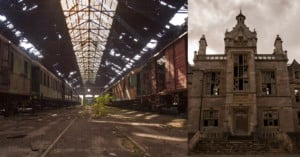
Why I Retired from Urban Exploration Photography (And Why You Shouldn’t)
As I crept around a massive abandoned World War II-era train yard, I realized the Eastern European security guards had dogs with them.

As I crept around a massive abandoned World War II-era train yard, I realized the Eastern European security guards had dogs with them.
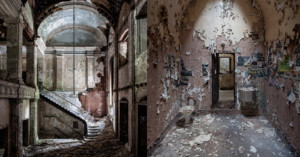
Through exciting but often dangerous urban exploration all around the United States, photographer Matthew Christopher has documented hundreds of sites that now lay forgotten but are forever preserved in his "Abandoned America" project.
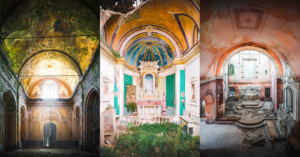
Church buildings have been a mainstay feature throughout Europe for centuries. From quaint country chapels to luxurious and majestic cathedrals, the “Old World” is home or has been home to hundreds of churches. Some of them are maintained in pristine shape, highly regarded as national treasures, while others meet a rather different ending, being left in the hands of time and its relentless way of decaying things.
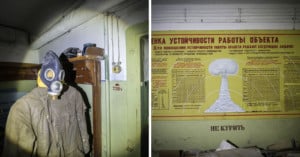
The Cold War is the conventional name for the period of political and military competition between two blocs led by the US and the USSR. This rivalry was mainly ideological and economic, intensified by the conventional and nuclear arms race.
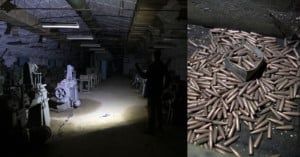
In the 1960s and ‘70s, the town of Poliçan was one of the largest and most important armaments centers in Albania. For security reasons, most information about the site was top secret and the town itself was closed to foreigners.
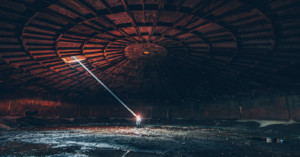
Beneath the streets of Tbilisi lies a network of tunnels, bomb shelters, and Soviet-era chambers that many locals know nothing about. Over the past several months, photographer David Tabagari has been exploring this silent underworld with extraordinary results.
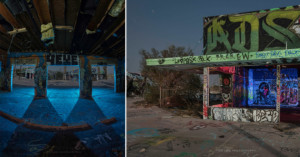
Photographer Ken Lee enjoys the mystery and excitement of nighttime photography as he explores abandoned sites when most are asleep. His latest series features an abandoned water park that had plenty of photographic opportunities.
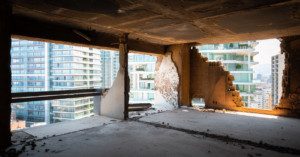
The explosion that happened last year in the Port of Beirut, Lebanon, has moved everyone. The Port of Beirut explosion on August 4th, 2020, didn’t just make it to the headlines for days, but it also massively impacted the beauty, life, and development of the Paris of the Middle East, i.e., Beirut.
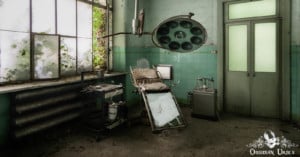
A scientist by day and photographer by night, Janine Pendleton has explored numerous abandoned sites around the world and has shared her photographs, experiences, and tips of her adventures to places not normally seen by the public.
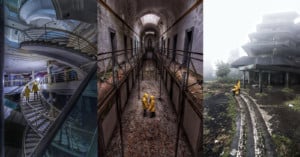
A mysterious duo who go by the name "Yellow Jackets," has intrigued viewers with their eerie, anonymous self-portraits set in abandoned locations.
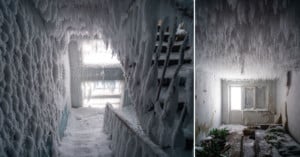
The Russian town of Vorkuta is the coldest city in all of Europe, with record cold temperatures of -61° F (-52° C). Photographer Arseniy Kotov was exploring the small mining town when he came across an abandoned apartment building that had frozen over, both inside and out.

French photographer Romain Veillon recently had the chance to explore a famous old chateau that represented the height of luxury in 1901. Now abandoned, the chateau in Veillon's images shows how the ravages of time spare no second thought for riches, leaving the place, quite literally, in tatters.
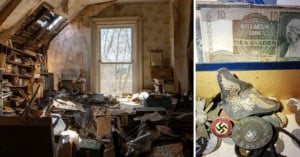
I'm urban exploration photographer Dave of Freaktography.com, and this is the story of how I found two sets of forgotten war medals in an abandoned house (and what I decided to do with them).

Last year, more than 120,000 tourists visited the Chernobyl Exclusion Zone, and in 2020 that number is expected to double. Mass tourism has forever become a part of the Exclusion Zone, mostly because of the successful HBO series “Chernobyl.”
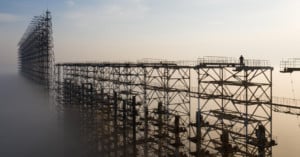
The DUGA over-the-horizon radar was one of the most important elements of the early warning system against an American nuclear attack on the USSR. More expensive to build than the nearby nuclear power plant, the complex consisted to two massive sets of receiving antennas located in Chernobyl and one transmission unit—which no longer exists—60km away in the town of Lubech-1.
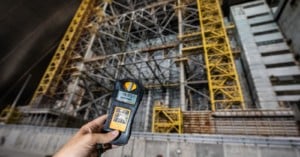
It’s been 3 years since the giant, 36,000-ton New Safe Confinement (better known as The Arch) was put over the damaged old sarcophagus that helps contain the radiation from the Chernobyl disaster. A symbolic moment that also summed up my 10 years of work documenting the Chernobyl Zone. However, just as the building of the new sarcophagus didn't finish the work inside related to eliminating the radioactive threat, I still have a reason to come here.
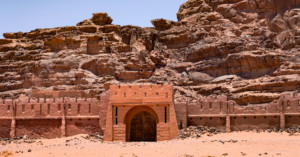
While exploring the southern, lesser-known part of the Jordanian desert Wadi Rum, I notice a remarkable, palace-like structure sitting on a high, rocky cliff. The view reminded me of a scene from the classic Oscar-winning film Lawrence of Arabia. It just lacked camel caravans and people.
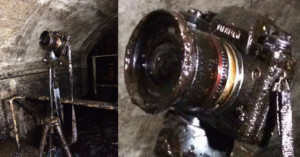
This past week, I had a bit of an accident with my Fujifilm X-T1 while doing some urban exploration in an abandoned fuel bunker. To cut a long story short, I ended up going for a swim in very oily water in a large partially flooded pump room with my camera.
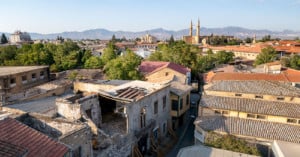
In September 2018, I was asked to travel to Cyprus and photograph the Buffer Zone (or Green Line) in Nicosia. It was an exclusive opportunity since this area is not accessible for civilians -- it's a demilitarised zone (DMZ), patrolled by the United Nations.
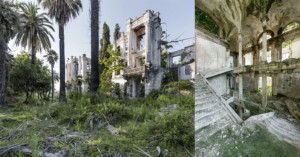
The Soviet Utopia: sending your hard-working state citizens on a health holiday to one of the empire's many sanatoria. Originally conceived in the 1920s, these USSR sanatoria offered a combination of health and medical benefits alongside thermal baths and spas. These institutions were once among the most innovative buildings of that era.
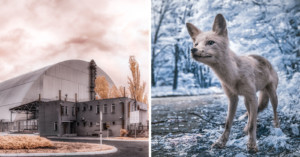
A few years ago, I visited the Chernobyl Exclusion Zone with an infrared camera. We always hear praises of the might of Mother Nature, how it renders useless mans’ creations and bears life above the ruins. Well, it’s something that is always felt, but never on such a huge scale. This place IS the place for these contrasts.
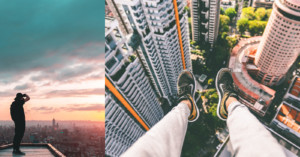
In the usual places we're seeing the monthly "Urbex (urban exploration) photographer dies in fall" story making the rounds. These are guys that trespass on rooftops, on ledges, in abandoned buildings, and so on, to take photographs.
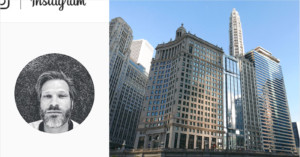
An urbex photographer was killed after he fell from the 20th floor of a luxury hotel in Chicago.
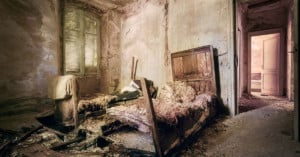
Editor's note: This article has been removed at the request of the author.
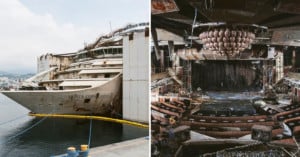
On January 13th, 2012, the giant Italian cruise ship Costa Concordia capsized and sank off Isola del Giglio, Tuscany, after running into an underwater rock, claiming 32 lives. In August 2014, in the midst of the salvaging operation, photographer Jonathan Danko Kielkowski secretly snuck onto the ship to document it in photos.
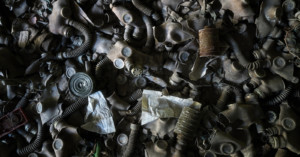
Before you read the rest of the article, and it will be a long read, please allow me to share a few thoughts with you. Visiting the abandoned city of Pripyat and the disaster site of Chernobyl was an experience that I was looking forward to for a very long time.
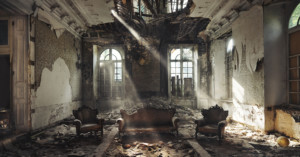
Rebecca Bathory first fell in love with the decaying beauty of abandoned buildings when she photographed an abandoned school in 2012. This love took her on an adventure to 30 countries and over 500 locations, culminating in a photographic series she's calling Orphans of Time.
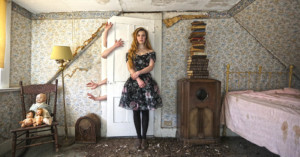
Photographing abandoned spaces has exploded in popularity in recent years. For photographer Karen Jerzyk, however, finding those spaces is only the first step. She transforms each one into what she describes as a "dark fairy tale" scene.
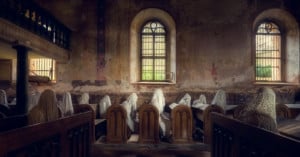
In this blog I would like to show you one of the scariest churches I have ever visited, back in March 2015. The church is located in a small town in the Czech Republic, and it was originally built in the 14th century.
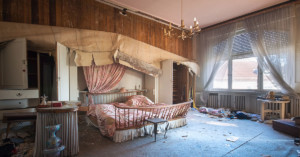
The bedroom is one of the most personal spaces in a house, hotel, or any other kind of building. It’s a place where my imagination can go wild. When I stand in an abandoned bedroom I’d like to think, "What happened here?."